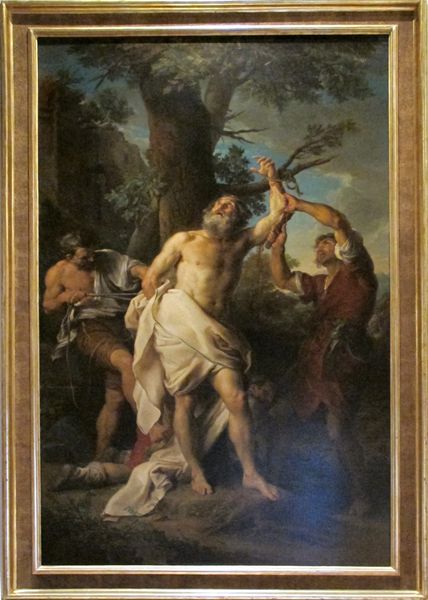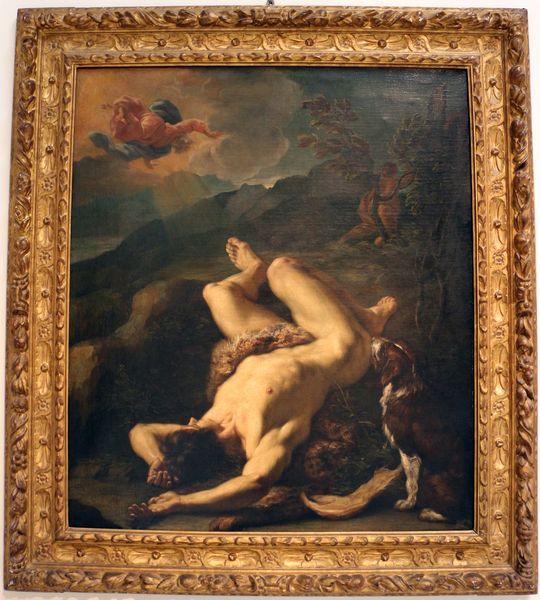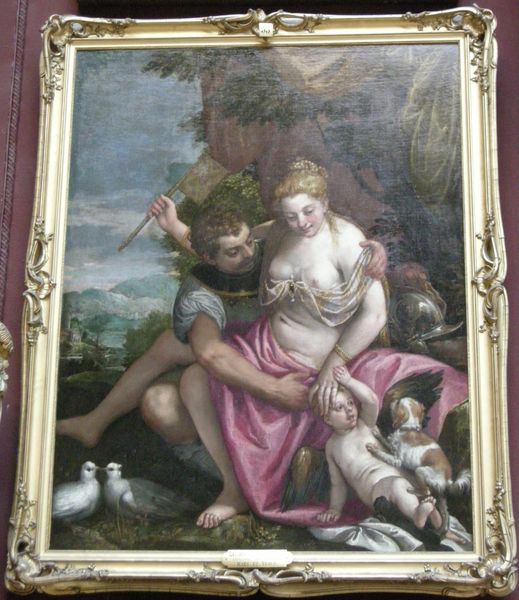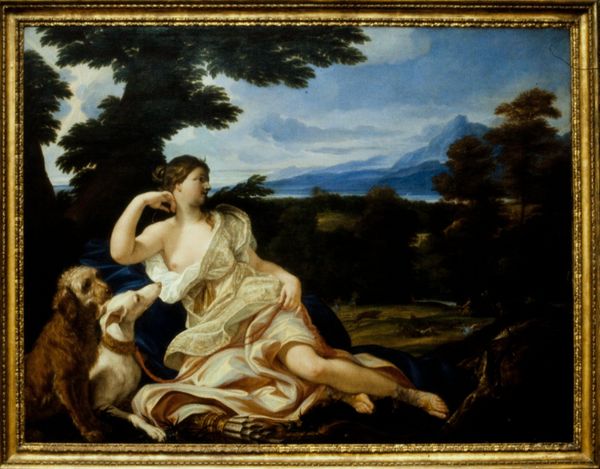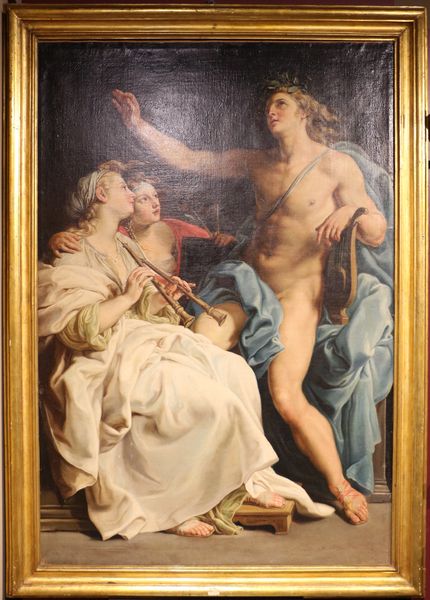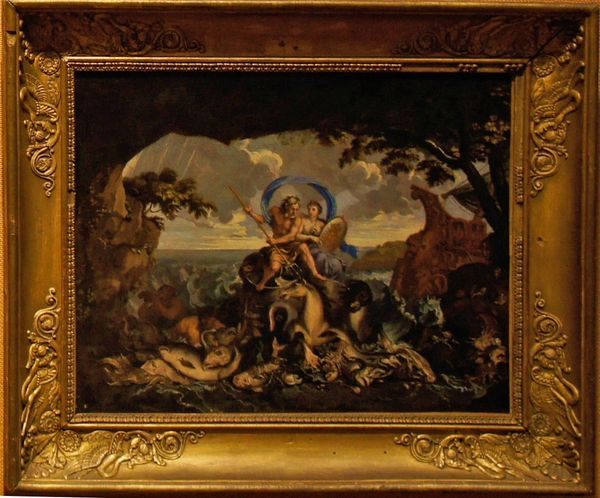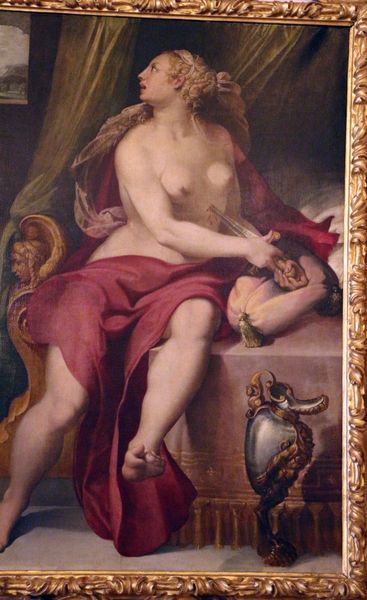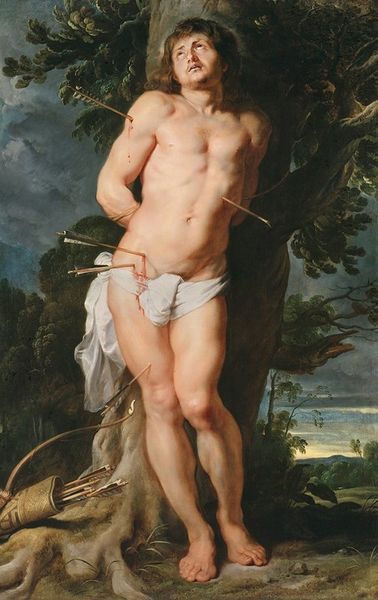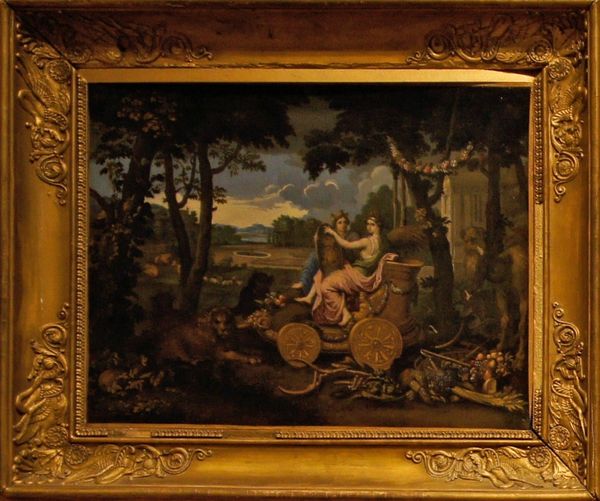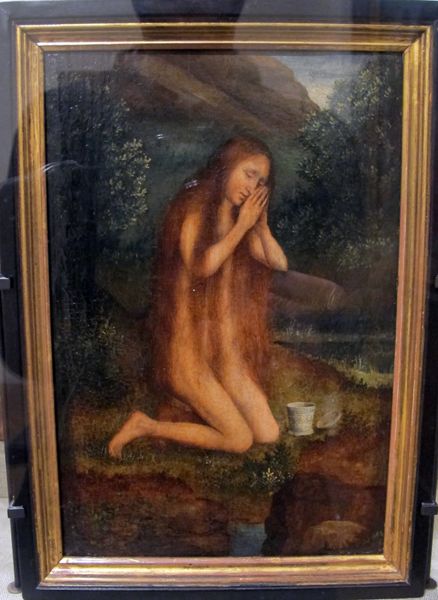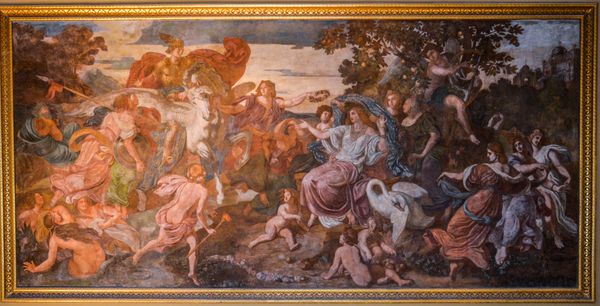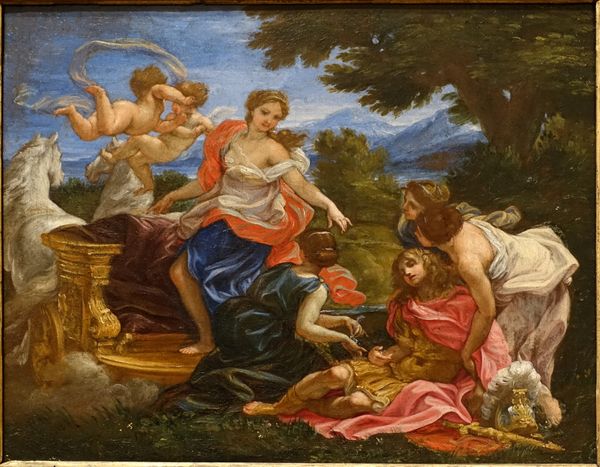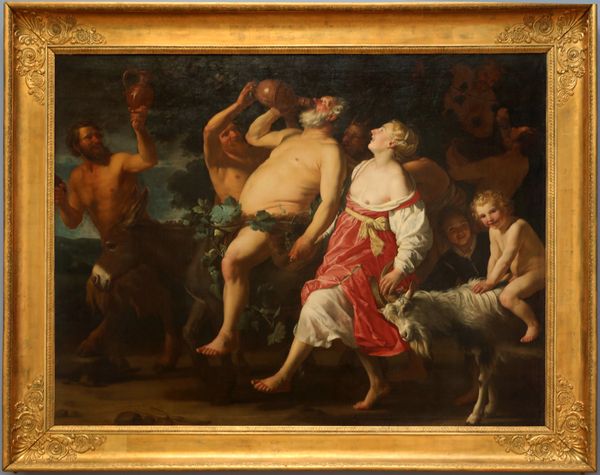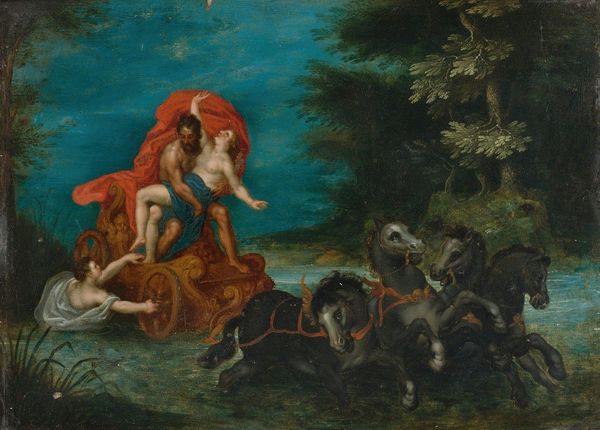
painting, oil-paint
#
portrait
#
baroque
#
painting
#
oil-paint
#
landscape
#
figuration
#
oil painting
#
history-painting
Copyright: Public domain
François Lemoyne's Saint Jean Baptiste, captures John the Baptist with his symbolic attributes: the lamb, the cross-staff, and the animal skin. These elements have evolved through a rich tapestry of cultural and religious symbolism. Here, the lamb is a reference to Christ, and the cross is a harbinger for Jesus's forthcoming arrival. John's animal skin and the wild, mountainous landscape hint at his solitary existence, devoted to spirituality and the natural world. This imagery is inherited from ancient pagan traditions and adapted through Christian reinterpretation. Consider, for example, how Hermes, messenger of the gods, shepherd of souls, is reimagined in John. This continuity reveals the inherent human need to connect with the divine through the natural and animal worlds. These symbols convey a profound emotional power, engaging the viewer on a subconscious level with themes of sacrifice, guidance, and revelation. The progression of symbols is never linear; they resurface, evolve, and take on new meanings, weaving a continuous thread through our collective consciousness.
Comments
No comments
Be the first to comment and join the conversation on the ultimate creative platform.
